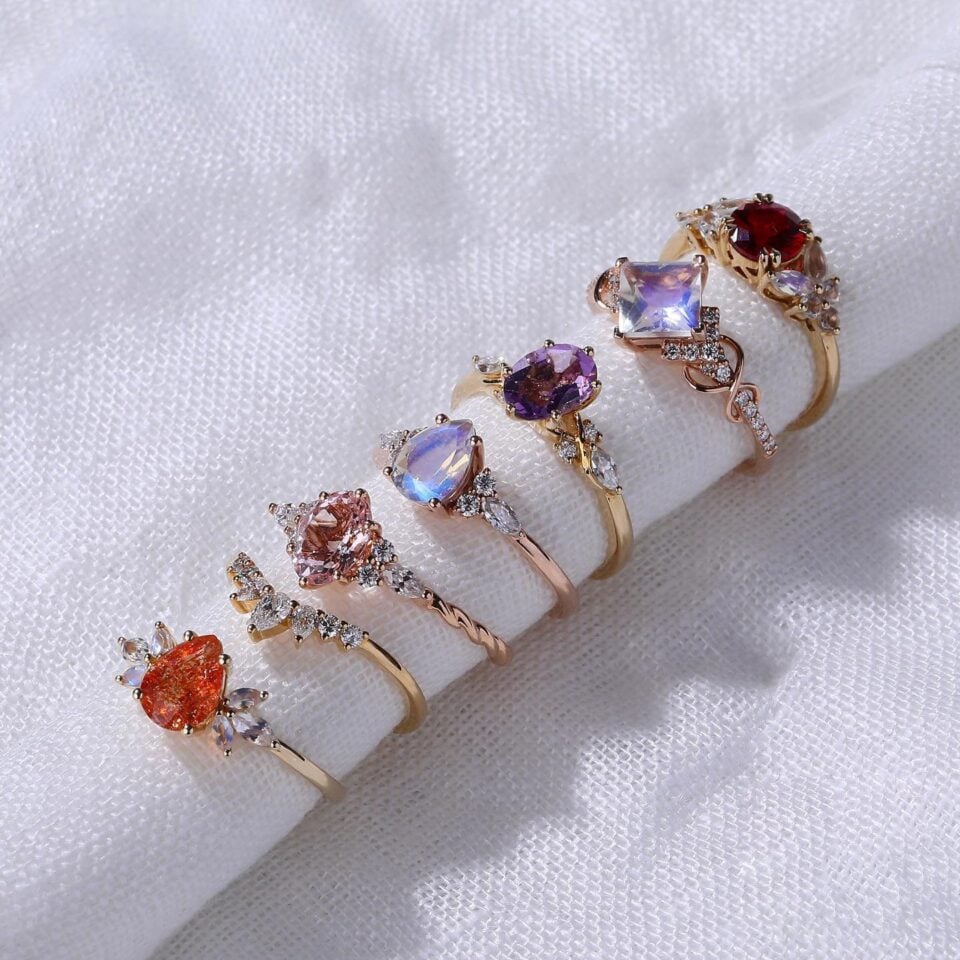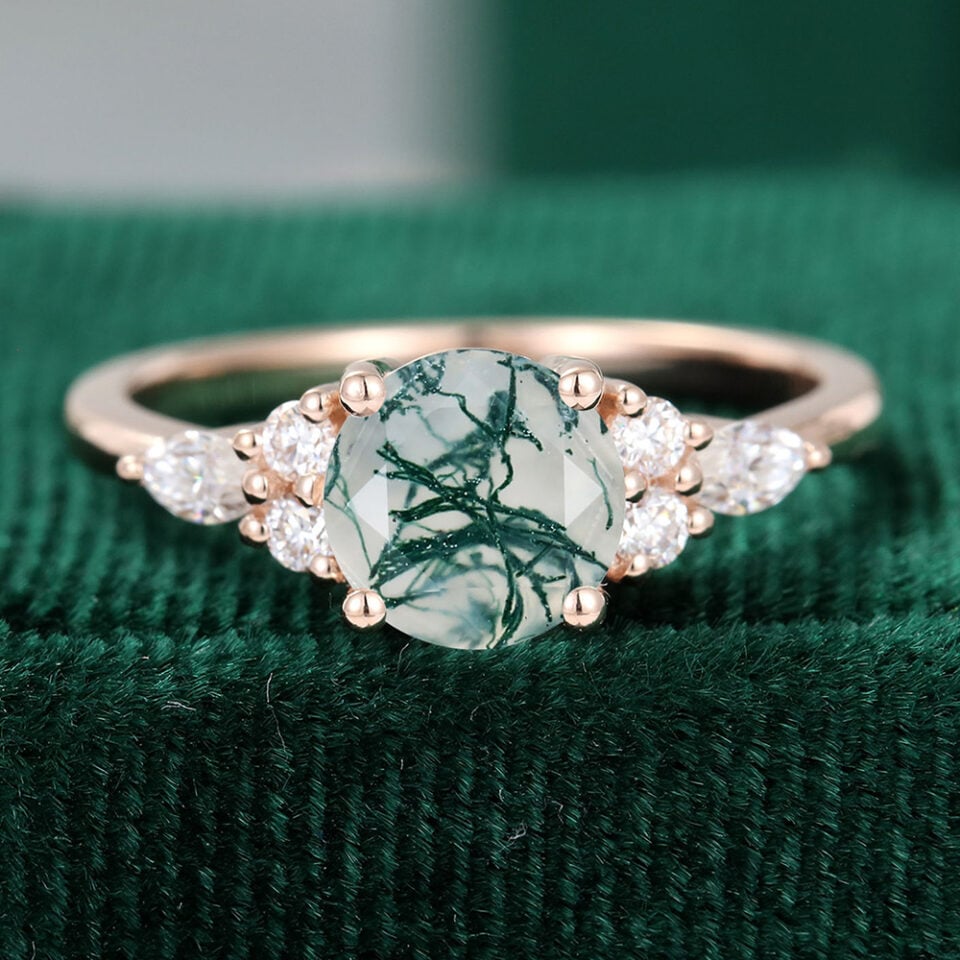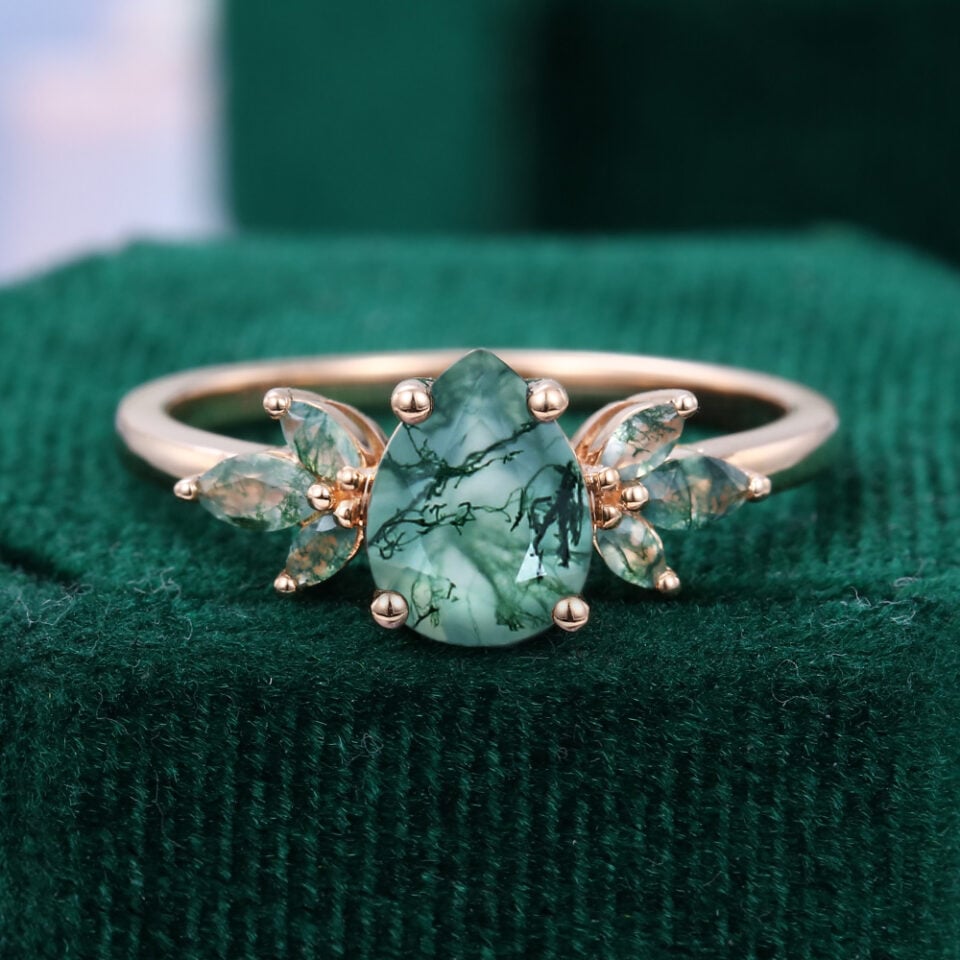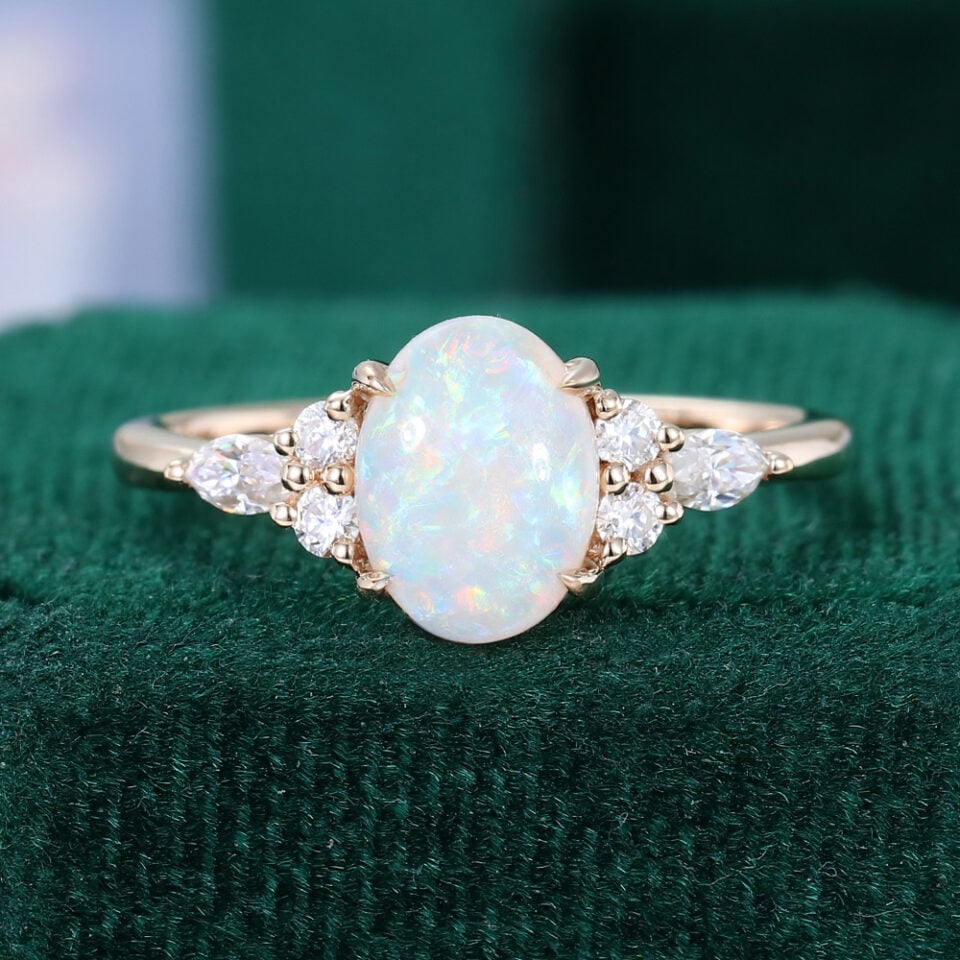- by MollyJewelryUS
- November 13, 2025
- Ring Journey
Choosing between lab-grown gemstones and mined diamonds ultimately comes down to value.
And for most modern couples, lab-grown gemstones offer the same beauty and durability as mined diamonds — but at a far more affordable price, with clearer ethics and more room for creative design.
If you want a stunning ring without unnecessary cost or environmental compromise, lab-grown gems are often the smarter choice.
Here’s a clear, practical breakdown to help you decide confidently.

Table Of Contents:
Which Option Is More Affordable?
Affordability is, without a doubt, the single biggest factor when choosing an engagement stone. The comparison is straightforward: Lab-grown gemstones consistently hold the overwhelming advantage in price, often costing 50% to 80% less than a mined diamond of comparable size and clarity.
This dramatic price difference immediately grants couples tremendous design freedom, allowing them to realize their vision without compromising on budget. This flexibility translates directly into:
Choosing a significantly Larger Center Stone for maximum visual impact.
Upgrading to Premium Metal Quality (14K or 18K solid gold) for heirloom durability.
Selecting more Intricate Designs or halo settings.
Incorporating Rare Colored Gems without the traditional premium pricing.
For example, at MollyJewelryUS, moissanite and moss agate engagement rings often start well under $500, offering a high-end look without the high-end strain.
Related:Affordable Engagement Ring on a $500 Budget
Cost Drivers: Mined Diamonds vs. Lab-Grown Gems
The reason for this immense price gap is rooted in the fundamental differences between the two production and distribution models.
Lab-grown gemstones are cultivated in a technologically advanced, highly controlled environment. This streamlined manufacturing process eliminates the huge operational costs associated with deep-earth extraction, complex international shipping, and the decades-long accumulation of supply-chain markups. Their price truly reflects the material and craftsmanship.
Intensive Mining and Labor: The vast environmental and logistical cost of extracting stones from the earth.
Supply-Chain Markups: Price increases accumulated over a long supply chain involving multiple brokers and distributors.
Artificial Scarcity: Decades of marketing reinforcing the idea of rarity to maintain high demand and prices.
Traditional Retail Structures: The high operating cost of conventional jewelry sales channels.
In short, by opting for lab-grown gems, you bypass these significant overheads, making transparency and value the defining factors—and allowing you to redirect those savings into the things that truly matter.
Visual Quality & Durability
A common question: Can you tell the difference?
Most buyers — and even many jewelers — cannot distinguish them by eye alone.
| Feature | Lab-Grown Gemstones | Mined Diamonds |
|---|---|---|
| Brilliance | Bright, controlled fire | Bright, varies with natural formation |
| Clarity | Fewer inclusions, cleaner | Natural inclusions common |
| Color Options | Wide range, affordable | Color diamonds extremely expensive |
| Cut Precision | Consistent, optimized | Varies depending on rough diamond |
| Durability | Moissanite & sapphire are highly durable | Very durable |
| Overall Look | Nearly identical sparkle | Classic brilliance |
Conclusion:In everyday wear, both look stunning. The differences are minimal — especially to the naked eye.
Ethics & Environmental Impact
This is where lab-grown gemstones shine beyond appearance..
Mining requires:
Large-scale land excavation
Disrupted ecosystems
High carbon output
Global transport
Potential traceability or labor concerns
Even certified diamonds cannot fully eliminate these environmental or ethical impacts.
Lab-grown gems require:
No mining
Far less water and land use
Up to 90% lower carbon emissions
Fully traceable origins
Guaranteed conflict-free sourcing
For couples who want their ring to reflect mindful values, lab-grown gems offer a clear advantage.
Related:How Lab-Grown Gemstones Are Made and Their Pros and Cons
Style, Color & Personalization
One of the biggest reasons couples love lab-grown gemstones is the creative freedom.
Mined diamonds — especially color diamonds — become prohibitively expensive as carat size or rarity increases.
Lab-grown gemstones allow you to choose expressive, meaningful stones without budget barriers:
Moissanite — diamond-level brilliance, elegant and timeless
Moss Agate — organic patterns and earthy beauty
Lab Opal — dreamy play-of-color, romantic and whimsical
Lavender Sapphire — soft, unique, emotional tones
Emerald:— vintage charm and rich green hues
With lab-grown stones, customization becomes affordable instead of aspirational.
Related: Popular Diamond Alternatives for Your Engagement Ring

Longevity & Everyday Wear
Durability is crucial for engagement rings.
Good news: lab-grown gemstones are absolutely suitable for everyday wear.
Moissanite: Mohs 9.25 (extremely hard)
Lab-grown sapphire: Mohs 9
Lab-grown spinel: Mohs 8
Lab opal: stable and wearable with basic care
Routine maintenance is simple:
Warm water + mild detergent
Soft storage pouch
Annual prong checks
Lab-grown stones don’t dull, fade, or discolor — their sparkle stays with you.
Learn More: Jewelry Care Guide
Which One Should You Choose?
✔ A larger or more brilliant stone for your budget
✔ A unique or colorful design
✔ Ethical and sustainable sourcing
✔ Custom settings without the high cost
✔ Maximum value for the money
Most modern couples fall here — choosing lab-grown for both beauty and practicality.
View our Choosing the Perfect Gemstones for Your Skin Tone – The Ultimate Guide for detai
✔ Tradition and sentimental symbolism
✔ The concept of natural rarity
✔ A long-standing cultural meaning
✔ A higher-end price tag as part of the experience
Both choices are valid — it depends on the story you want your ring to tell.l
Conclusion
Your engagement ring should reflect your love, your values, and your lifestyle — not outdated rules.
Lab-grown gemstones offer the same sparkle and strength as mined diamonds, but with clearer ethics, more creative freedom, and far greater affordability.
They prove that brilliance doesn’t have to come with a heavy cost, financially or environmentally.
✨ Shop consciously. Shine endlessly.
Explore MollyJewelryUS’s Gemstone Ring Collection to find a ring that truly speaks to you.
Related FAQs
Are lab-grown gemstones real gemstones?
Yes. They share the same physical and chemical structure as natural stones — the only difference is that they’re created in a lab rather than mined from the earth.
Do lab-grown gemstones lose sparkle over time?
No. High-quality lab stones like moissanite or sapphire retain their brilliance indefinitely with simple cleaning and care.
Is a lab-grown gemstone engagement ring considered luxury?
Absolutely. Today’s luxury is defined by design, craftsmanship, and ethical value — not just price. Lab-grown gemstones meet all three.
Can lab-grown gemstones be customized?
Yes — they’re perfect for bespoke creations! At MollyJewelryUS, every gemstone ring can be tailored in metal, setting, and stone type to reflect your love story. Contact us for free consult.
Why are mined diamonds still more expensive?
Their cost is influenced by supply chain markups, rarity perception, and historical marketing — not necessarily beauty or durability.
Why are lab-grown gemstones becoming so popular?
Because they offer:
✔ lower prices
✔ larger stones
✔ ethical sourcing
✔ more style options
✔ no compromise on beauty







